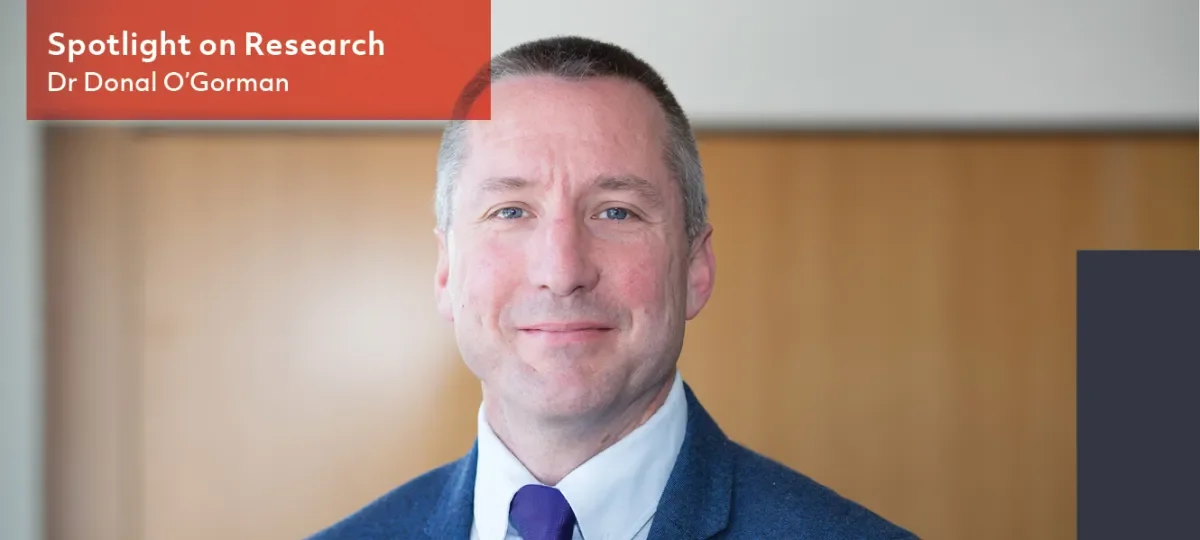

Bed rest and beyond: new insights into spaceflight, ageing and disease on Earth
This week’s Spotlight on Research is with Dr Donal O'Gorman, DCU School of Health and Human Performance and Interim Director of the National Institute for Cellular Biotechnology.
You are looking at how exercise (or lack of exercise) can affect the human body. Why are you interested in that?
“My research looks at the regulation of metabolism and how the body uses energy and this includes examining what happens to biochemical pathways in cells. Exercise is a powerful way to study energy metabolism as it directly regulates so many cellular processes and can also lead to adaptations that maintain health and prevent disease.”
One of your research projects with the European Space Agency asks people to take a lot of bed rest. Why?
“One reason is that prolonged bed rest simulates the effects of microgravity on the body. When humans are in space, we know they their bodies change – they lose bone density, muscle mass and fitness - they show the biochemical signs of ageing, which are reversible when they return to Earth.
The European Space Agency wants to develop better ways for astronauts to exercise and eat in space to counteract the lack of gravity, and bed-rest studies on Earth allow us to look at larger numbers of humans than we could keep in space for that time.
Prolonged bed rest is also a good model to study ageing at a physiological level as the changes in bed rest are similar to ageing but at a much faster rate, so we can analyse the data from bed-rest studies to better understand the processes of ageing and keep people healthy for longer.”
A bed-rest experiment sounds like it might be a nice break for the volunteers…
“An experiment where volunteers are asked to lie in bed all day does sound great, doesn’t it? But it’s not that easy. The volunteers at a centre in France funded by the European Space Agency have to stay lying down with at least one shoulder touching the pillow at all times. They have to eat, drink, wash and even go to the toilet lying down. Over the course of between 20 and 60 days, depending on the experiment, we examine the changes in muscle, blood and urine samples from the volunteers so we can better understand what is happening.”
What kinds of results have you been finding?
“We know that the amount of energy used is decreased during bed rest and we study what happens in the muscle. One of the biggest changes we see when people are on prolonged bed rest is that the number of mitochondria in their muscles decreases. These are tiny structures that allow us to provide energy for our cells. We have seen small but subtle changes in the way the mitochondria regulate energy metabolism in muscle, and these also reflect ageing related changes.”
What will the impacts be of these simulation studies?
“We will be able to inform personalised strategies for keeping people healthy in space, particularly on long-term missions to the moon and Mars which will involve people living in low gravity for years. For people on Earth, we are also hoping to identify new ways to assess how people respond to various interventions, like diet, exercise and medication, so we can develop a more personalised approach to preventing and treating diseases such as diabetes.”
Why do we need a personalised approach to diabetes treatments?
“A personalised approach to disease prevention and management is now a key focus of research, as it is evident that not everyone will respond in the same way to the same treatment. Someone may be able to control their diabetes by adopting a diet and exercise regime that best suits their physiology, others will require a combination of lifestyle and medication. At the moment, it’s hard to know in advance the best approach for each individual, so we have been running the DEXLIFE project to figure out better ways of predicting people who progress to type 2 diabetes and those that respond to diet and exercise.”
You have a busy job as a researcher and as interim director of the NCIB. What do you do to take a break?
“I’m a runner. I typically run for about an hour 5-6 times a week, and I have completed some ultramarathon races of 80-100 kilometres. Running gives me great headspace, I find you get great clarity of thought on a run, it's the best thinking time. I also work on community projects where I live in Slane. We are building a community centre and I am working on a team to make the canal from Drogheda to Navan navigable again.”
